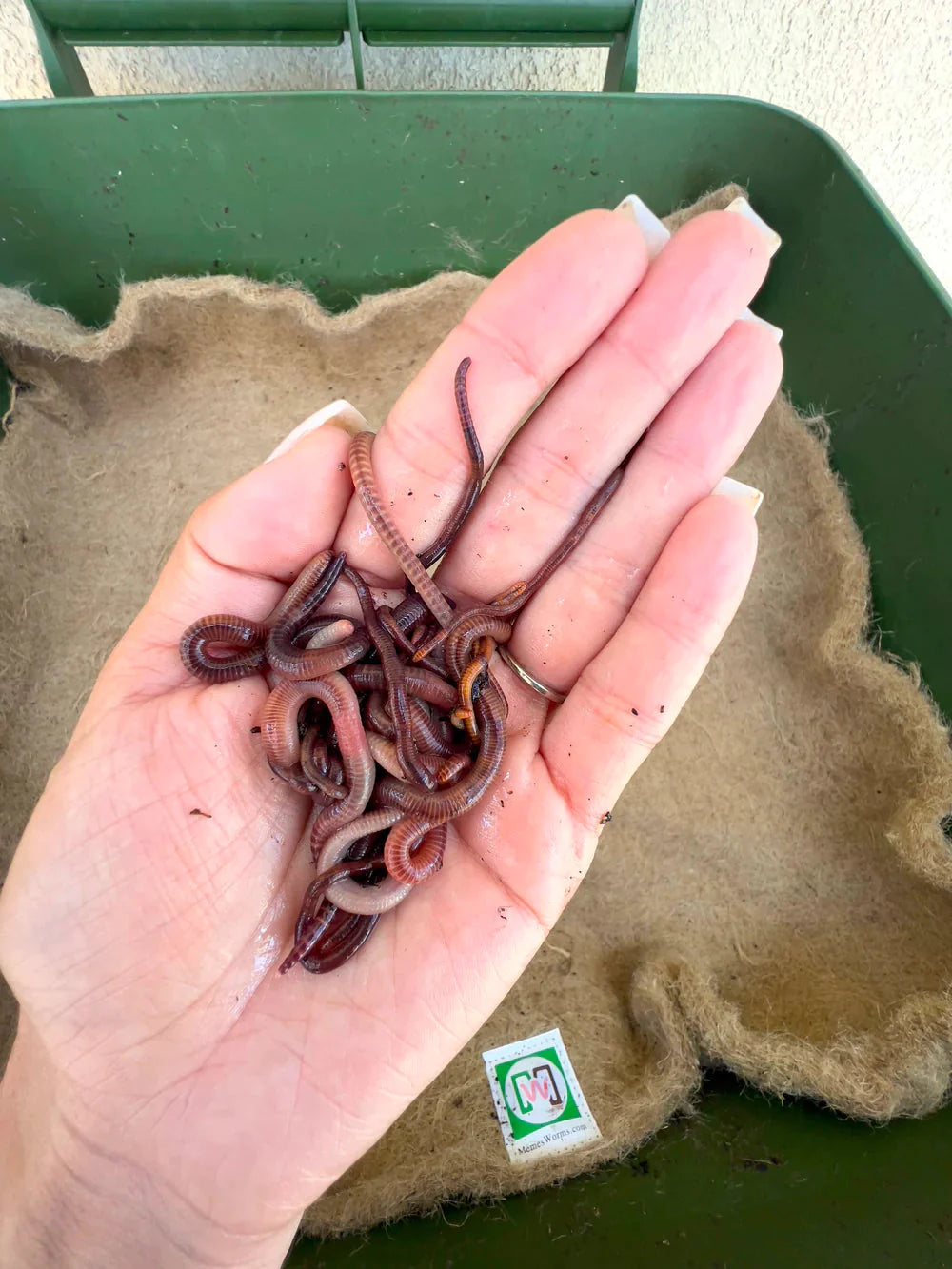Table of content
In the exciting world of vermicomposting, understanding the significance of worm bedding and optimizing it can greatly impact the health and productivity of your worms. In this comprehensive article, we will delve deeper into the crucial role of worm bedding, explore common bedding materials your worms will thrive in, discuss how to prepare ideal worm bedding, and offer expert tips for maintaining and optimizing your vermicomposting system. We'll also examine common mistakes to avoid to ensure your vermicomposting journey is a successful one.
The Crucial Role of Worm Bedding
Why Worm Bedding Matters in Vermicomposting (Worm Bedding)
Worm bedding is not just an essential component of your vermicomposting system; it plays a critical role in ensuring the well-being of your worms. It provides them with a warm, moist refuge where they can thrive, reproduce, and seek shelter from adverse conditions like excessive dryness, extreme heat, or cold temperatures.
The ideal worm bedding consists of a blend of organic materials with a slightly acidic pH and a balanced carbon-to-nitrogen ratio of approximately 50:1. This bedding should retain moisture while facilitating adequate oxygen flow, enabling rapid decomposition, and creating a nutrient-rich worm bin environment for your worms to flourish.
Exploring Bedding Materials (Bedding Material)
Common Bedding Materials Your Worms Will Love
Now that you understand the significance of worm bedding, let's explore some common materials that your worms will thrive in:
- Shredded Newspaper (Worm Bin Bedding): This affordable and readily available option is a favorite among worm enthusiasts. Ensure it's free of dyes and glues, as these can be harmful to your worms.
- Straw with Oats (Worm Bedding Material): Combining straw with oats provides both bedding and a food source for your worms. Be mindful of matting if not mixed with other materials.
- Coco Fiber (Coir) for Worms: Coir is highly absorbent and serves as a natural alternative to peat moss. However, rinse it before use to remove any additives or fertilizers that might harm your worms.
- Vermiculite or Perlite for Worms: These lightweight materials support microbial growth and absorb liquids well. However, they may not hold water as effectively as other materials.
- Aged Manure as Worm Bedding: Easily obtainable at garden and livestock feed stores, aged manure boasts a high carbon content for microbial breakdown. Ensure it's moistened to the consistency of a wrung-out sponge before use.
Preparing Ideal Worm Bedding Materials
Steps to Prepare Ideal Worm Bedding (Worm Bin Bedding)
To prepare ideal worm bedding, follow these steps:
- Gather Your Chosen Bedding Materials (Worm Bedding Material): Select a mix of materials such as shredded newspaper, straw, coir, vermiculite, aged horse manure, or peat moss. Ensure they meet the criteria of a slightly acidic pH and a balanced carbon-to-nitrogen ratio.
- Mix the Materials (Worm Compost Bin): Combine the selected materials in a suitable container or bin. Ensure that they are thoroughly mixed to create a well-balanced bedding mixture.
- Moisture Control (Moisture Level): Add water to the mixture gradually, aiming for a moisture level similar to that of a wrung-out sponge or around 80% humidity. It's essential not to make the bedding too wet, as this can be detrimental to your worms.
- Aeration (Oxygen Flow): Ensure the bedding mixture allows for adequate oxygen flow. To enhance aeration, consider incorporating shredded paper, leaves, or ripped cardboard into the bedding.
- pH Adjustment (Peat Moss): If necessary, adjust the pH of the bedding by adding Oyster Shell Flour or crushed eggshells to maintain a slightly acidic environment.
Maintaining Your Worm Bedding
Expert Tips for Worm Bedding Maintenance (Worm Food)
As with any composting material, worm bedding requires maintenance to ensure it remains a suitable environment for worms. It's crucial that the bedding stays damp but not soggy, with a moisture level akin to a wrung-out sponge or around 80% humidity. To gauge the moisture level accurately, consider using a moisture meter.
Adding an extra layer of shredded paper to your worm bin after each feeding can aid in moisture retention. It also helps deter flies and gives your worms an opportunity to mix food and bedding before their next meal. Additionally, regularly fluffing and turning the worm bed once a week can break up any clumps of bedding, introduce air, and ensure your worms and their habitat remain healthy.
Common Mistakes to Avoid in Vermicomposting (Provide Adequate Bedding)
While vermicomposting is a rewarding practice, there are common mistakes that beginners and even experienced vermicomposters should avoid:
- Overfeeding Your Worms (Worm Composting Bins): It's tempting to provide your worms with more food than they can consume. Overfeeding can lead to a smelly, overcrowded bin and may stress your worms.
- Neglecting Moisture Levels (Moisture Levels): Failing to maintain the proper moisture level in your worm bin can result in dehydration or drowning of your worms. Regularly check and adjust the moisture content as needed.
- Using Inappropriate Bedding (Adequate Bedding): Choosing the wrong bedding materials can lead to poor aeration or excess moisture retention. Be selective in your bedding choices to create an optimal environment.
- Ignoring Temperature (Worms Arrive): Worms thrive in moderate temperatures. Avoid exposing them to extreme heat or cold, which can be fatal.
- Adding Toxic Materials (Composting Worms): Steer clear of materials treated with pesticides, colored inks, or glues, as these can harm your worms.
Conclusion
In conclusion, worm bedding is a critical factor in successful vermicomposting. It provides the ideal environment for your worms to thrive, ensuring efficient decomposition of food scraps and the production of nutrient-rich organic fertilizer. By choosing the right bedding materials, following expert tips for maintenance and optimization, and avoiding common mistakes, you can enhance the effectiveness of your vermicomposting system and contribute to a healthier planet through sustainable waste management.
Ready to Optimize Your Vermicomposting?
Don't miss the opportunity to optimize your vermicomposting system with high-quality worm bedding. Take the next step toward greener living and join the community of eco-conscious vermicomposters. Start your vermicomposting journey today at Meme's Worms!



1 comment
Steve
Hi Samantha.
Thanks for the article. I’m running a vermi-bag mini and it’s going really well.
How do you recommend I turn the bedding. I have your worm comb.
Thanks again.
Steve Hood
Leave a comment
All comments are moderated before being published.
This site is protected by reCAPTCHA and the Google Privacy Policy and Terms of Service apply.